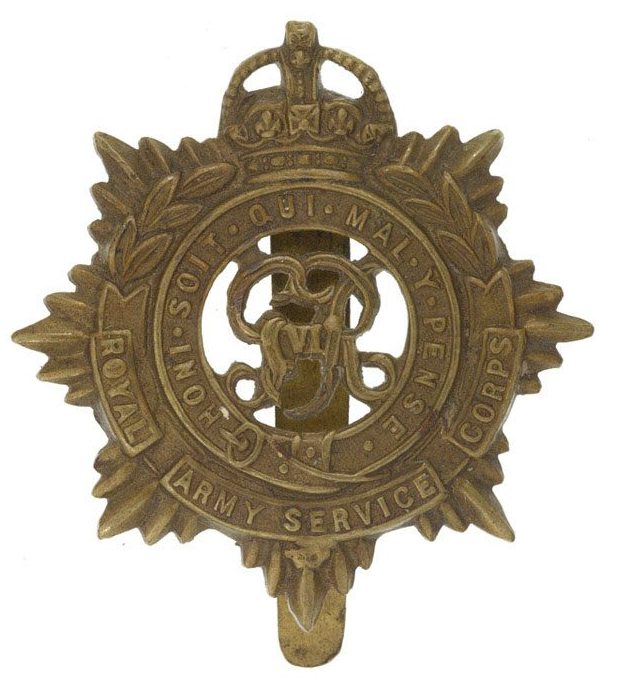Personal Details
Born: 8 September 1889 in Halifax, Yorkshire and baptised on 12 September 1894 in St. Augustine’s Church, Halifax.
Family: His father was Anthony Wade and mother was Eunice Wade, maiden name Ellis. He had six brothers and sisters, namely Thomas Whalley, Mary J, Sam, Albert, Agnes and Herbert. No records found for marriage or children.
Residence: At the time of his baptism his family were living at 65 Battinson Road, Halifax. The 1911 census shows him living and working in Market Drayton, Shropshire. The military records show his address as 6 Yardington, Whitchurch, Shropshire; this is the address for him on the 1919 Absent Voters’ Register.
Employment: The 1911 census records him as working as a ‘Cowman on Farm’.
Died: Not known
Military Details
Regiment: Royal Army Service Corps
Rank: Driver
Service Number: T3/028648
Date of Enlistment: 16 November 1914
Date of Discharge: 10 June 1919
Reason for Discharge: Demobilisation
George was awarded the Campaign Medals (British War Medal and Victory Medal)

The British War Medal (also known as 'Squeak') was a silver or bronze medal awarded to officers and men of the British and Imperial Forces who either entered a theatre of war or entered service overseas between 5th August 1914 and 11th November 1918 inclusive. This was later extended to services in Russia, Siberia and some other areas in 1919 and 1920. Approximately 6.5 million British War Medals were issued. Approximately 6.4 million of these were the silver versions of this medal. Around 110,000 of a bronze version were issued mainly to Chinese, Maltese and Indian Labour Corps. The front (obv or obverse) of the medal depicts the head of George V. The recipient's service number, rank, name and unit was impressed on the rim.
The Allied Victory Medal (also known as 'Wilfred') was issued by each of the allies. It was decided that each of the allies should each issue their own bronze victory medal with a similar design, similar equivalent wording and identical ribbon. The British medal was designed by W. McMillan. The front depicts a winged classical figure representing victory. Approximately 5.7 million victory medals were issued. Interestingly, eligibility for this medal was more restrictive and not everyone who received the British War Medal ('Squeak') also received the Victory Medal ('Wilfred'). However, in general, all recipients of 'Wilfred' also received 'Squeak' and all recipients of The 1914 Star or The 1914/1915 Star (also known as 'Pip') also received both 'Squeak' and 'Wilfred'. The recipient's service number, rank, name and unit was impressed on the rim.

